In our previous article, we presented the Messerschmitt Bf.110C aircraft. Now let’s learn something more about the pilots of the three versions included in the WW2 Wings of Glory Airplane Packs: the German aviators Georg Christl (LW), Günther Radusch (LW), and Fritz Schupp (LW) and his unit, the Zerstörergeschwader 26 (ZG 26).
Georg Christl
Georg Christl was born on 3 October 1913 at Pfaffenberg in Niederbayern. He was a German Luftwaffe ace and recipient of the Knight's Cross of the Iron Cross during World War II. The Knight's Cross of the Iron Cross was awarded to recognize extreme battlefield bravery or successful military leadership. Georg Christl was credited with 7 aerial victories during World War II.
Christl participated in the Battle of Britain with III./ZG 26. On 31 August 1940 he escorted Do.17 bombers to raid Duxford and was intercepted by RAF fighters. His aircraft was hit and Oberleutnant Christl was forced to crash-land back at his base in Arques, France.
Christl was Staffelkapitän of 7./ZG 26, based in Sicily, flying Bf.110s in December 1940. His role was to protect the supply routes from Italy to North Africa. He was also called upon to attack enemy ships, perform reconnaissance missions and patrols, and to support ground forces during the campaign in North Africa.
He also participated in the invasion of Yugoslavia and flew missions over Malta. On April, 9th 1941, Hauptmann Christl was leading 7./ZG 76, escorting He.111 bombers raiding Tobruk harbor. The formation was intercepted by RAF Hurricanes and during the ensuing combat Christl claimed one oppponent shot down. His victim was the RAF ace Flying Officer George Goodman (12 destroyed and 2 damaged victories) of 73 Squadron, who force-landed within the outer defenses of Tobruk unhurt.
In December 1941, 7./ZG 26 was transferred to Derna in North Africa to counter the Allied counter-attack, Operation Crusader. Hauptmann Christl assumed command of III./ZG 76 on December, 25th 1941. He was to lead the Gruppe until its withdrawal from the Mediterranean theatre, being awarded the Ritterkreuz for his leadership in the desert on March, 18th 1942.
He finally relinquished command on July, 12th 1943 when the Gruppe was withdrawn from Italy back to Germany. Christl was transferred to a staff role with the General der Jagdflieger. Major Christl was posted to Parchim in July 1944 to command Jagdruppe 10, an experimental testing unit of specialized anti-Bomber weapons, until the end of war.
Georg Christl was credited with seven victories, although one source has credited him a victory total of 19.
Günther Radusch
Günther Radusch was born on 11 November 1912 at Schweta in Westpreußen. He was a German aircraft pilot, the sixth highest scoring night fighter flying ace in the German Luftwaffe during World War II.
He was also a recipient of the Knight's Cross of the Iron Cross with Oak Leaves (German: Ritterkreuz des Eisernen Kreuzes mit Eichenlaub). The Knight's Cross of the Iron Cross and its higher grade Oak Leaves was awarded to recognize extreme battlefield bravery or successful military leadership.
Günther Radusch is credited with 65 aerial victories. He claimed one victory during the Spanish Civil War, the remaining 64 victories were all claimed at night in over 140 combat missions, including the destruction of 57 four-engine bombers. It is thought that he has obtained other 14 wins that he never claimed and that were never awarded.
Radusch, an enthusiastic glider pilot as a student, joined the military service of the Heer before transferring to the Luftwaffe. Radusch and nine others, among them Günther Lützow, Wolfgang Falck and Hannes Trautloft, were recommended for Sonderausbildung (special training) at the Lipetsk fighter-pilot school in Russia.
He was sent to Spain as part of the Condor Legion in October 1936 as a Lieutnant. He claimed his only aerial victory in the Spanish Civil War on 22 April 1937. Together with fellow pilot Feldwebel Franz Heilmayer of 2./Jagdgruppe 88, they each claimed one Polikarpov I-15 shot down, one of which was flown by Felipe del Río Crespo, a seven-victory ace.
Radusch also tested the Heinkel He.112 5-1 under combat conditions in Spain. For his services in Spain, he received the Spanish Cross in Gold with Swords (Spanienkreuz in Gold mit Schwertern). Günther Radusch died on 29 July 1988.
Fritz Schupp
Fritz Schupp and Karl Nechwatel were part of the Zerstörergeschwader 26 (ZG 26) "Horst Wessel", a Luftwaffe heavy/destroyer fighter aircraft-wing of World War II. The Zerstörergeschwader 26 was formed in early 1936 from the Jagdgeschwader 134 "Horst Wessel" and was re-equipped with the Messerschmitt Bf.110 shortly before the outbreak of World War II.
The ZG 26 was tasked with "Defense of the Reich" duties during the invasion of Poland, and over the North Sea their pilots gained their first important victories against RAF aircrafts. The unit took part in the Battle of France from May–June 1940 and while his pilots won many fights on the France skies, several members of the squadron were killed in action, on board of their Messerschmitt Bf.110s.
The deadly fights were fought during the Battle of Britain, against RAF fighters that defended the British Isles from the heavy attacks of the German air forces. Many Bf.110s were shot down by Hurricanes, even if ZG 26 pilots were able to prove their abilities on fights over The Channel. Unfortunately the Bf.110 showed their limits when they escorted bombers over Great Britain and ZG 26 took heavy losses from the RAF fighters. During the Battle of Britain Unteroffizier Schupp and Gefreiter Nechwatal were shot down and they were declared missing.
The ZG 26 unit proved his value in several other war scenarios, like Mediterranean Sea and Africa, Russia and during the final phases of World War 2, when Germany was not able to withstand the advance of the allied troops and surrendered to them.
Information sources: Aces of the Luftwaffe - Christl, Aces of the Luftwaffe - Radusch, Wikipedia - ZG 26; Luftwaffe 39-45 Historia.

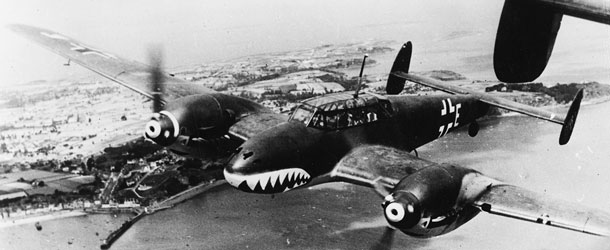
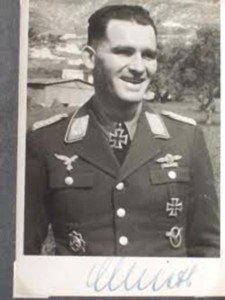
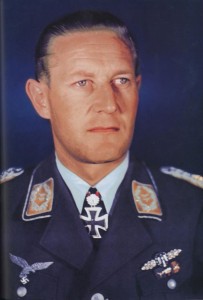


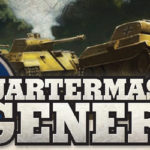


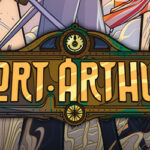


Follow Us on